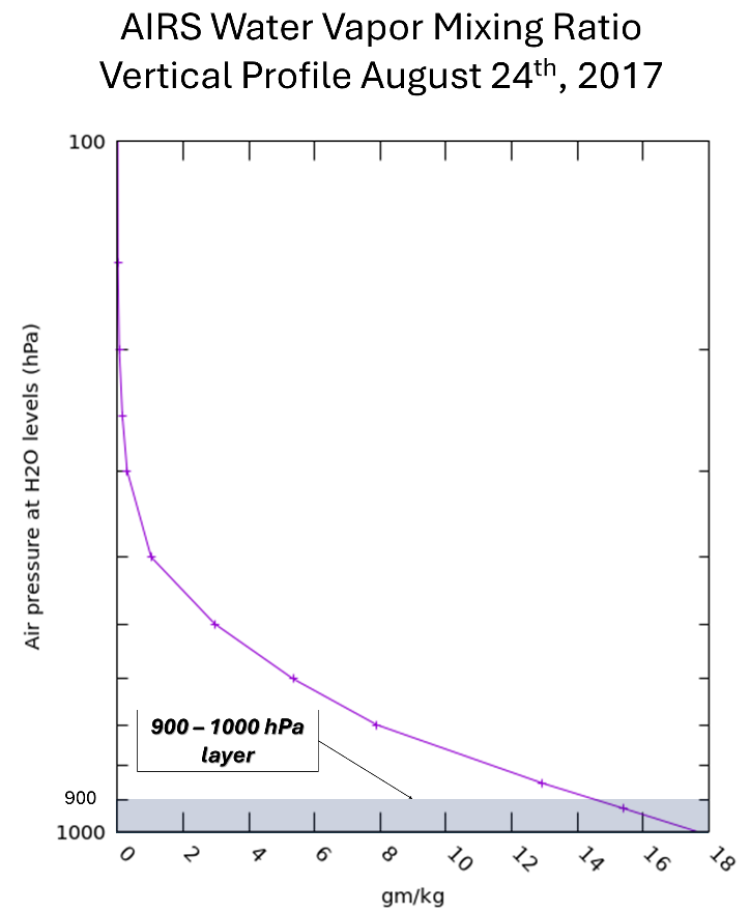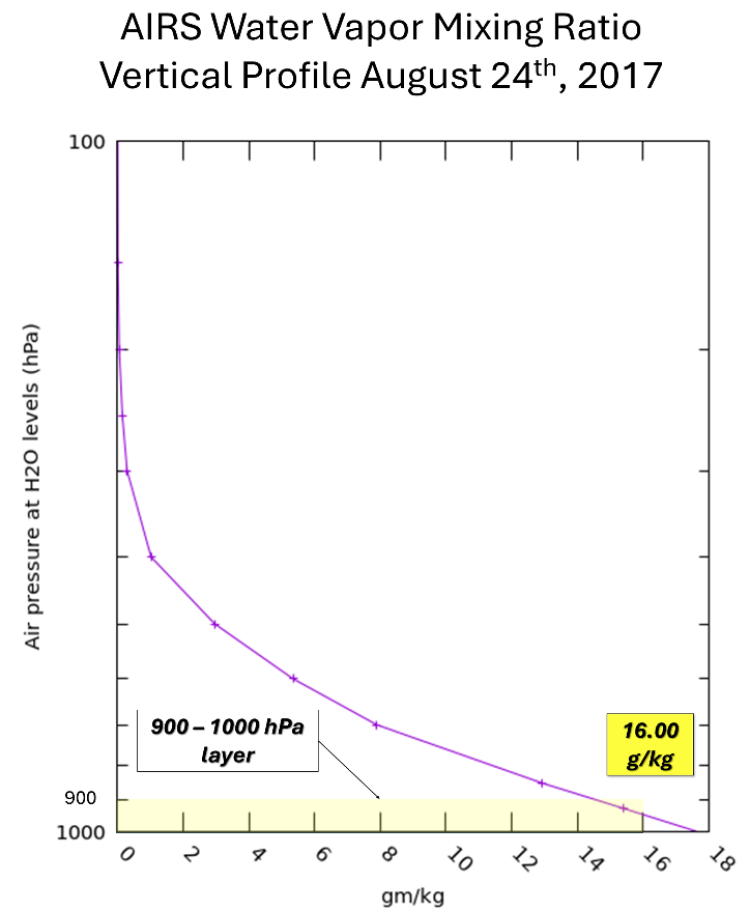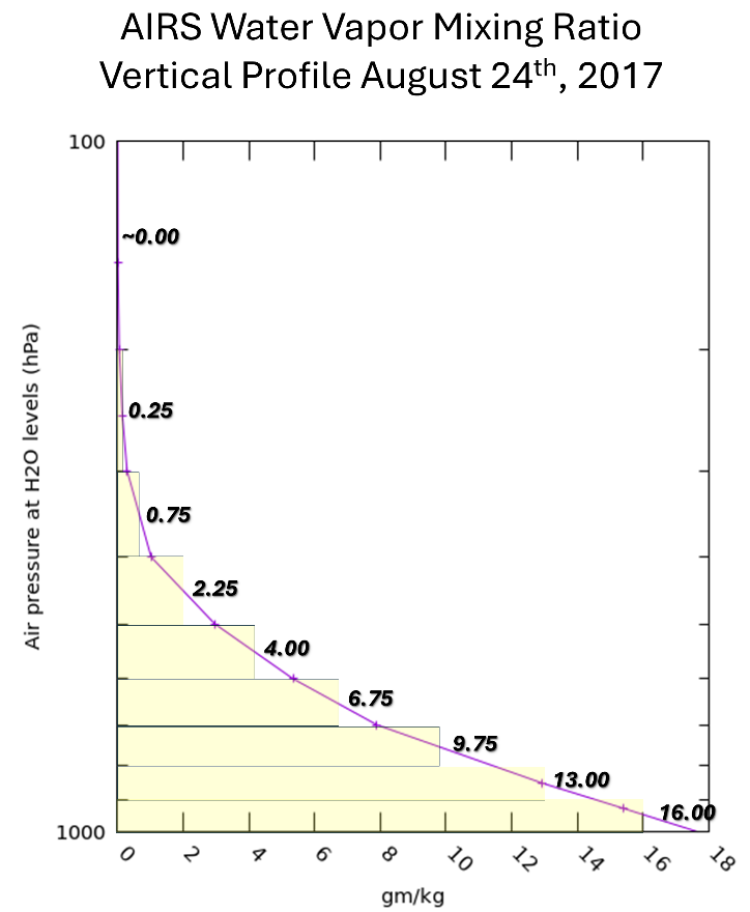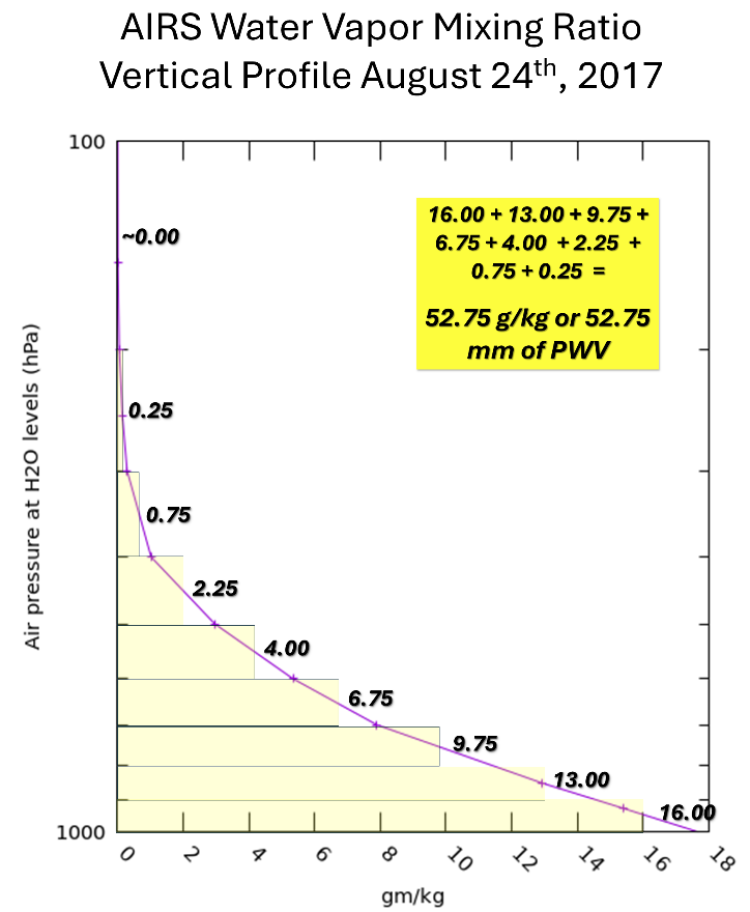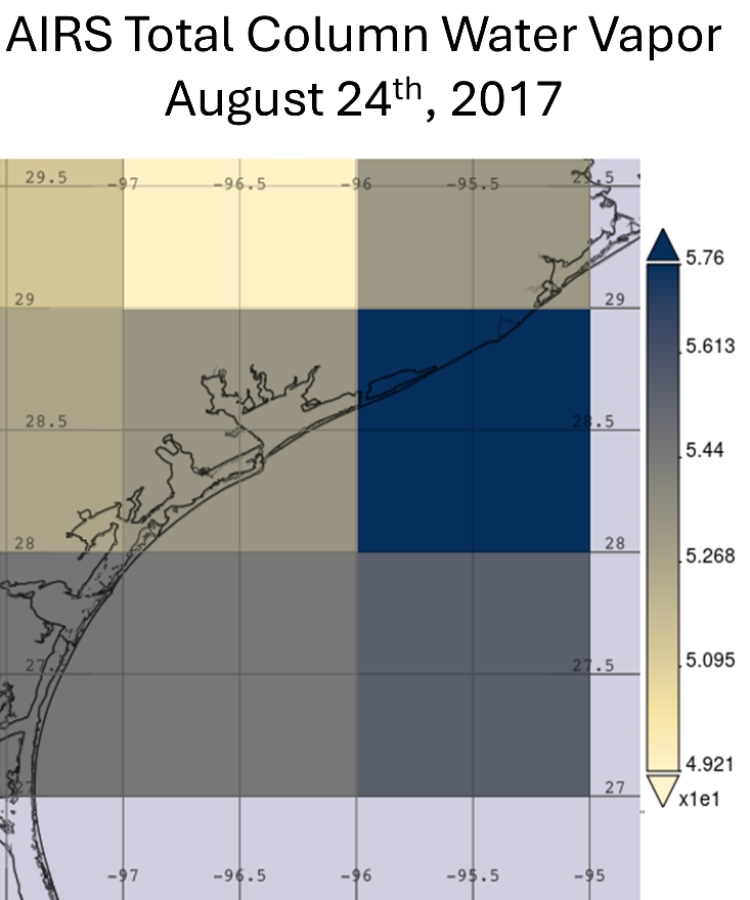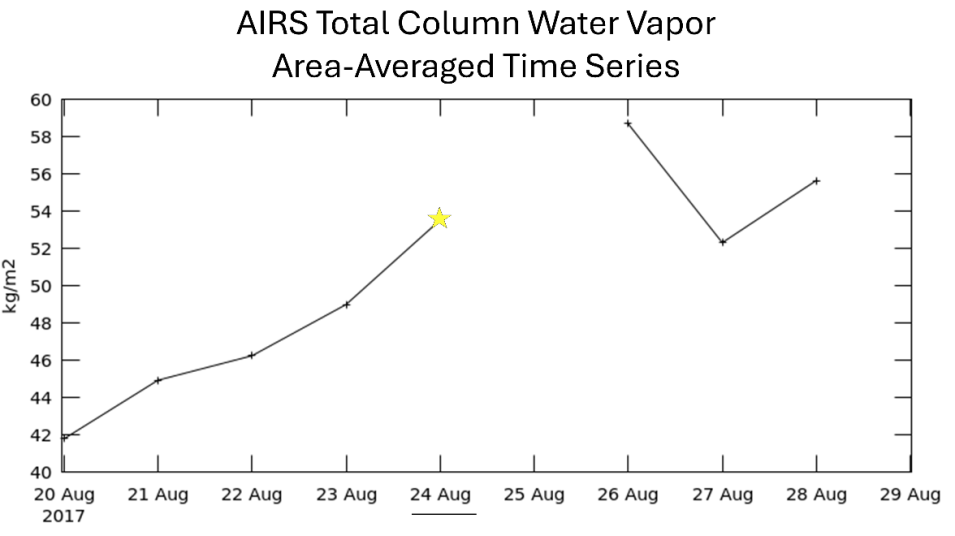Introduction
Water vapor mixing ratio (WVMR) is a variable that can be used to determine the amount of water vapor in the atmosphere. It represents the ratio of the mass of water vapor to dry air, typically expressed in units of grams per kilogram (g/kg). In meteorology, vertical soundings record variables such as dewpoint temperature and pressure. These two variables can be used to compute WVMR at any pressure level of the atmosphere and are simpler to obtain than directly measuring the amount of water vapor itself. WVMR is thus the variable usually reported from a sounding (Figure 1).
WVMR typically decreases nonlinearly with altitude, and knowledge of the exact distribution of WVMR followed by integration is needed to compute the true value of precipitable water vapor (PWV) for a whole column or layer of the atmosphere, making PWV a challenging measurement to obtain with precision. However, with spaceborne instruments like NASA’s Atmospheric Infrared Sounder (AIRS), we can provide very close, near-theoretical approximations of the PWV in the atmosphere.
This tutorial demonstrates how to convert WVMR to PWV using an AIRS sounding produced by NASA’s Giovanni. Read on to explore methods for converting WVMR to PWV for a layer of the atmosphere and for computing the total column water vapor (TCWV).
Precipitable Water Vapor
To estimate PWV, we used a vertical profile of WVMR from AIRS on August 24, 2017, to represent the PWV available ahead of Hurricane Harvey as the storm rapidly strengthened into a Category 4 hurricane. This occurred shortly before Harvey made landfall near Rockport, Texas, on August 25, 2017.


